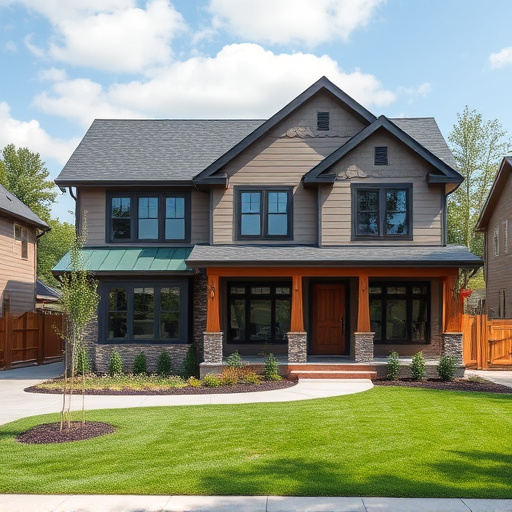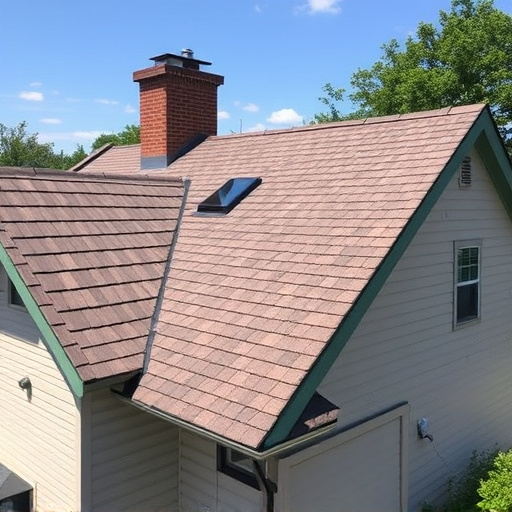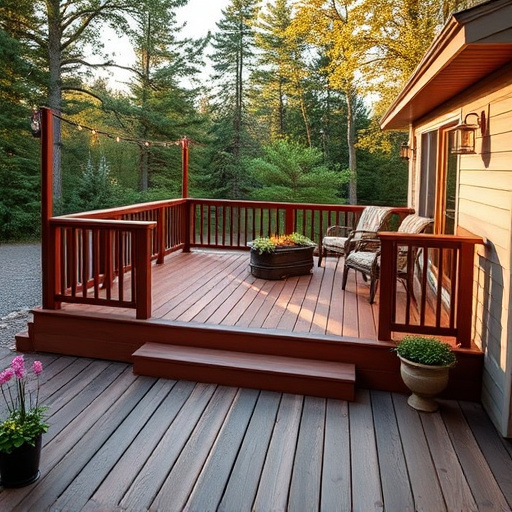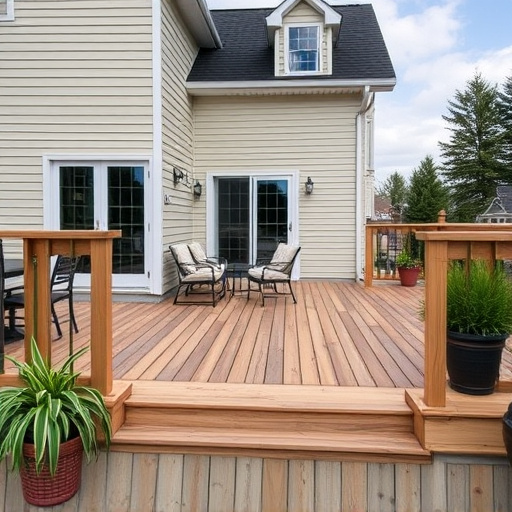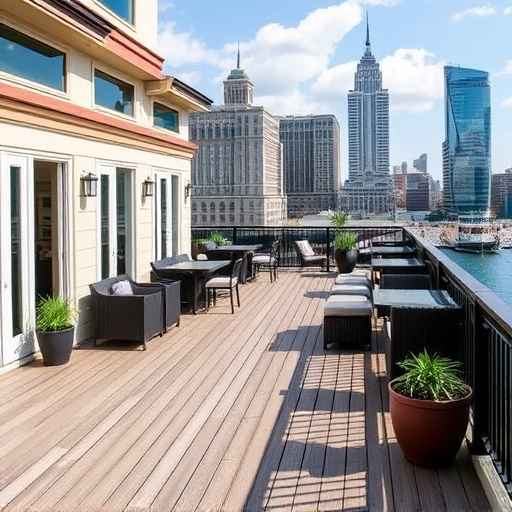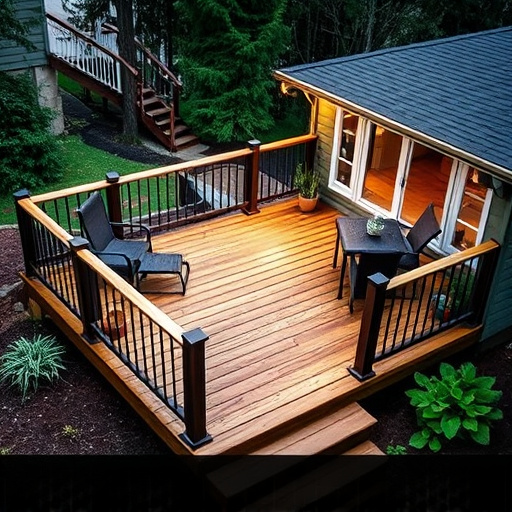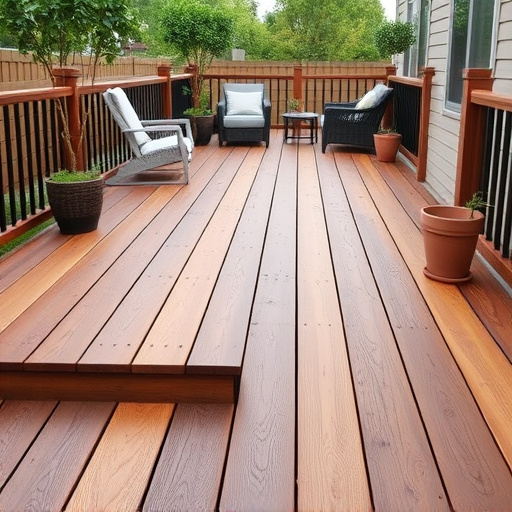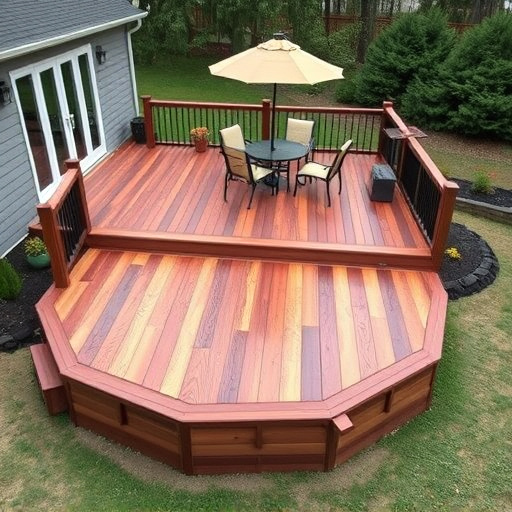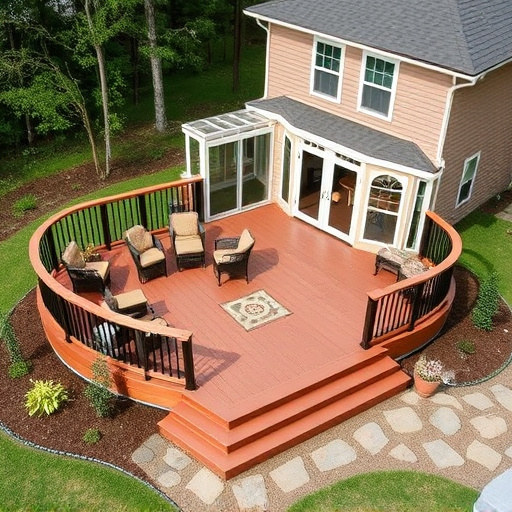Choosing durable materials like composite wood, concrete, or metal for residential decking installation enhances aesthetics and property value. Robust layouts with non-slip textures and drainage prevent accidents and damage. Regular cleaning, sealing, staining, and inspections prolong lifespan and protect against elements. Professional consulting ensures complex decks meet safety standards.
Looking for a deck that can handle heavy use? Discover the secrets to creating a durable and long-lasting residential decking space. From selecting sturdy materials like composite or treated lumber to strategic design choices for high-traffic areas, this guide empowers homeowners. Learn essential maintenance tips to keep your deck looking its best for years to come. Explore these expert insights and elevate your outdoor living experience with robust, functional residential decking.
- Choosing Durable Materials for Residential Decking
- Design Considerations for High-Traffic Areas
- Maintenance Tips to Ensure Longevity of Your Deck
Choosing Durable Materials for Residential Decking
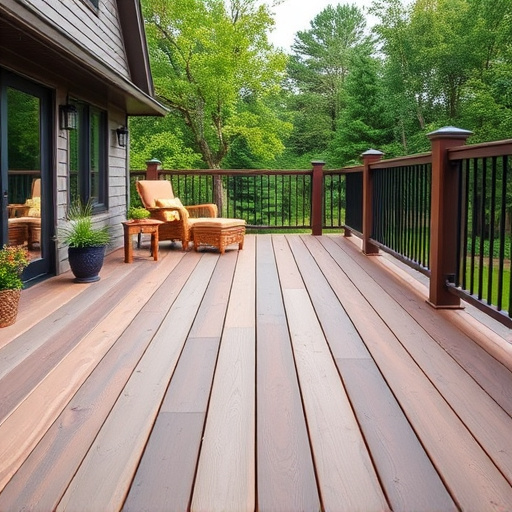
When it comes to residential decking that can withstand heavy use, selecting durable materials is a top priority. Wood has long been the go-to option for decks, but advancements in technology have introduced superior alternatives. Composite decking, for instance, combines wood fibers with plastic to create a material that’s resistant to rot, mold, and insects, ensuring longevity even under constant exposure to weather and foot traffic.
For those seeking an even more durable solution, concrete or metal decking can be considered. Concrete offers exceptional strength and durability, making it ideal for high-traffic areas. Similarly, metal decking panels are known for their rust-resistant properties, often backed by extensive warranties. Integrating these robust materials with professional installation ensures a residential deck that not only stands the test of time but also enhances the property’s overall aesthetic and value, complementing other essential exterior features like commercial roofing and siding services, or even sophisticated siding and gutters systems.
Design Considerations for High-Traffic Areas
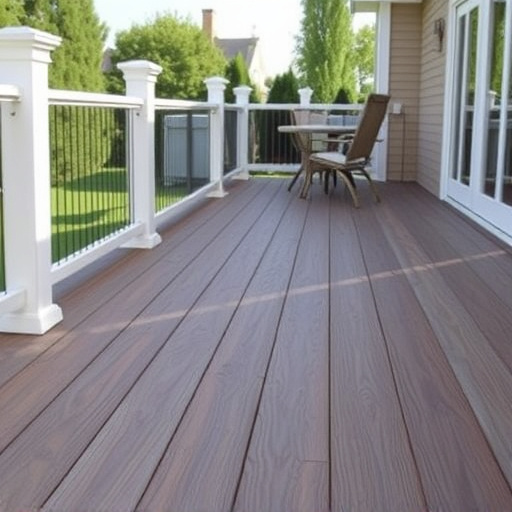
When designing residential decking for high-traffic areas, several key considerations come into play. First and foremost, materials used should be robust enough to withstand frequent footfall and potential furniture placement. Opting for durable, weather-resistant lumber like treated cedar or hardwoods is essential. These materials not only hold up better over time but also offer an aesthetically pleasing finish that complements the surrounding landscape.
Additionally, proper planning of the deck layout can significantly impact its longevity in heavy-use zones. Consider incorporating non-slip textures or patterns on the decking surface to prevent accidents. Efficient drainage systems should also be implemented to redirect water away from the deck, preventing moisture damage and rot. Professional siding installation techniques, including commercial-grade materials, can further reinforce structural integrity, ensuring the decking remains a sturdy and safe space for years to come.
Maintenance Tips to Ensure Longevity of Your Deck
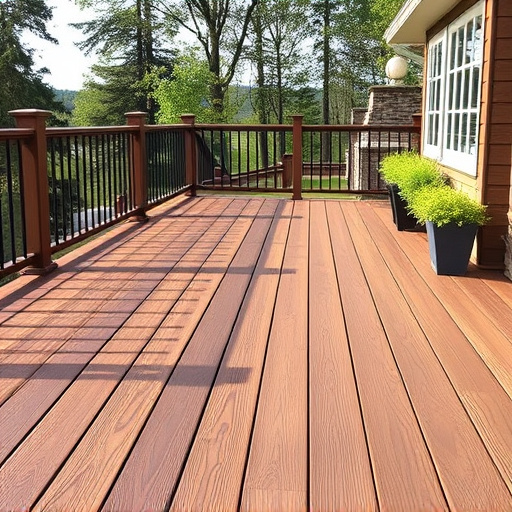
Regular maintenance is key to extending the life of your residential decking and keeping it looking its best. A thorough cleaning at least once a year helps remove dirt, mildew, and debris that can degrade the material. Use a soft-bristled brush or broom and a pressure washer (if permitted by your deck’s manufacturer) to gently scrub the surface. Avoid using harsh chemicals which could damage the wood.
After cleaning, apply a fresh coat of sealant or stain to protect the deck from the elements. This barrier shields against water damage, UV radiation, and temperature fluctuations, all of which can contribute to structural deterioration over time. Regular inspection is also vital; look for signs of rot, warping, or loose boards and address any issues promptly. Consider hiring a professional roof consulting service for a thorough assessment if you have a large or complex deck, or one that shows signs of heavy commercial roofing usage.
When it comes to residential decking, choosing durable materials, thoughtful design, and regular maintenance are key to ensuring your deck can withstand heavy use. By implementing these strategies, you’ll create a long-lasting outdoor living space that becomes the centrepiece of your home for years to come. Remember, a well-cared-for deck not only enhances your property’s value but also provides a relaxing retreat where memories are made.


